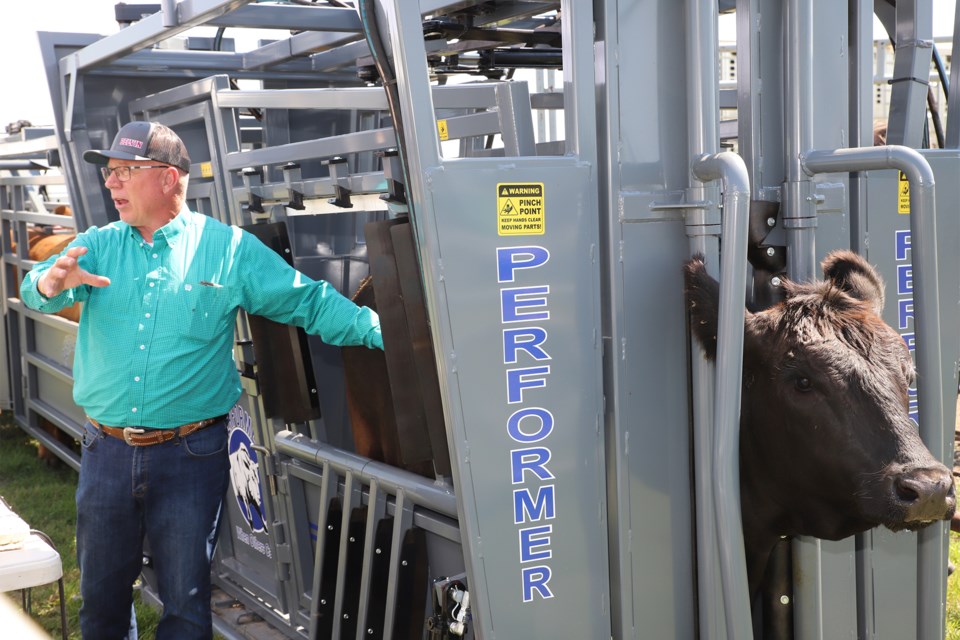OLDS — About 25 people gathered around a livestock pen at the Olds College Smart Farm Aug. 1 for a demonstration on livestock ultrasound.
It was first day of the two-day AgSmart agriculture and technology exposition.
Rod Wendorff of Windy Ridge Ultrasound Inc. near Raymond gave the demonstration. Raymond is about 36 kilometres south of Lethbridge.
Wendorff has shown cattle and worked as an accountant. He’s been doing livestock ultrasounding for about 25 years now.
“I went from being an accountant to ultrasounding cattle. This is way funner,” he said sparking some light laughter from audience. “That’s why I’m still working, too.”
There are at least a couple of uses for ultrasounding livestock.
One is to determine whether an animal is pregnant and if so, how far along that pregnancy is.
Information obtained via ultrasound can even help predict the quality of an animal’s progeny.
Another purpose was the main focus of Wendorff’s demonstration – to find out how much marbling (inner muscular fat) an animal has for grading purposes.
Wendorff showed the crowd a probe, a black piece of machinery six to eight inches long.
He then displayed a dishwashing detergent bottle filled with canola oil.
He spread the canola oil on a very patient cow herded into a cattle cage. The canola oil ensures there’s a good connection between the animal and the probe.
The probe sends sound waves into the cow and will send back signals to a portable display case when it hits muscle, fat or bone.
“The whiter the screen is and the more marbling it’ll be,” Wendorff said.
In essence, a good amount of marbling results in a tastier, more tender piece of meat and can thus fetch a good price.
"The packing plants, the higher the marbling, the more they can sell those for,” Wendorff said.
“This one looks like it would be borderline double A, high double, low triple,” he said after a few minutes of scanning.
He then did a scan for a ribeye steak.
“If you think about a rib steak, in the one corner of the rib steak, there’s a pocket of fat,” Wendorff said. “So this one would probably be an A2 triple A.”
He noted that A1 is the leanest, then A2, A3, and then overfat.
Once he’s completed his ultrasounds, Wendorff sends the pictures to a lab in Iowa where they’re analyzed.
A report is then sent to a breed association which in turn sends it to breeders.
“I never get to see the results,” he said.
Wendorff said it usually takes three business days to receive the results. However, “if you want to pay more money, like everything else, you can get it the next day.”
During an interview with the Albertan, Wendorff said decades ago, he was showing cattle when a person dropped by his stall and asked if he was doing ultrasound on his herd. That person said they were doing pregnancy checks that way.
“I thought ‘that’s good,’ and I thought about it all the way home and I thought that’s what I wanted to do," he said.
Wendorff took a course at Kansas State University and was hooked. He utilized his severance package from his former job to buy all his equipment.
Now Wendorff has clients almost all the way to Winnipeg.
“Eight years of accounting and then ultrasound forever,” he said with a smile.
Wendorff also does some work for the Olds College of Agriculture & Technology.
"They feed for some purebred people. Twice a year I come for the purebred and then once a year for their own replacement,” he said.
“And (people ask) ‘when are you going to retire?’ “(And I say) when it’s not fun anymore. I’ll slow down.’”




